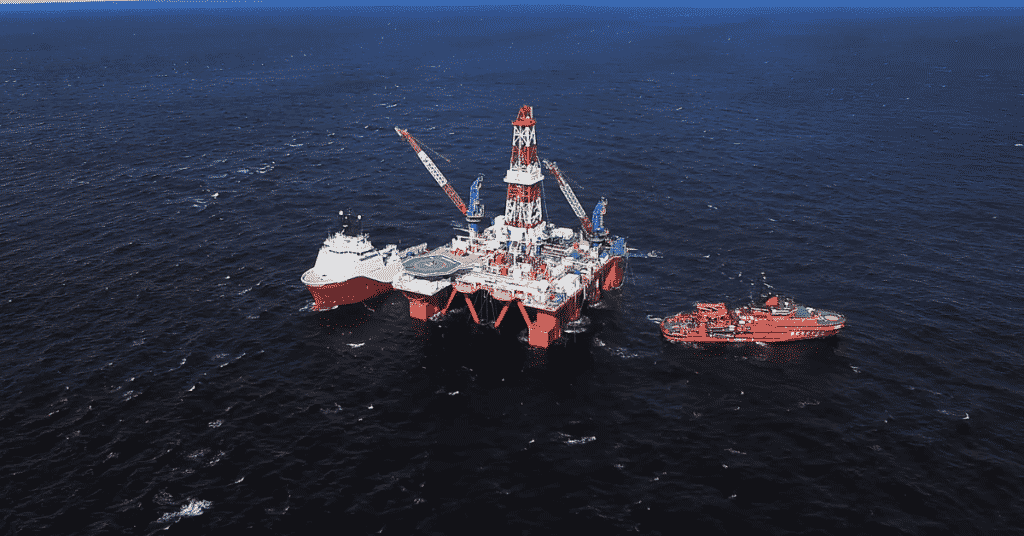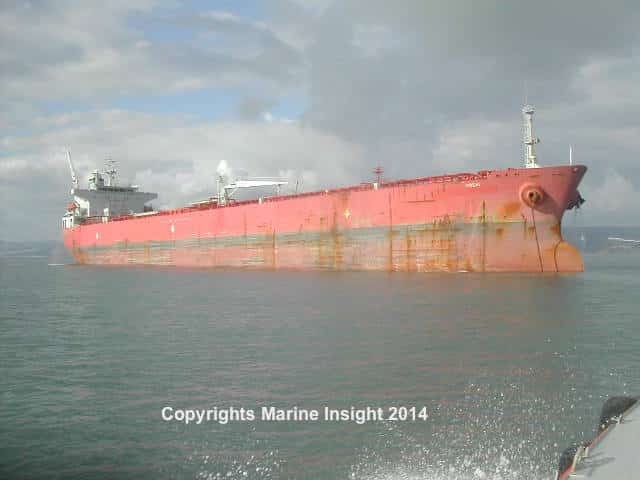15 Amazing Facts About the Black Sea

The Black Sea, also known as the Euxine Sea, is a marginal water body of the Atlantic Ocean located between Eastern Europe and Western Asia.
Ancient mariners saw the Black Sea as a dangerous water body since savage tribes inhabited its shores.
In addition, the anoxic nature of the Black Seawater, due to which the process of decomposition is slow in the lower water layers, has also resulted in several scary rumours, making the sea infamous.
However, as time passed, the Black Sea’s image as one of the most challenging and inhospitable water bodies to navigate changed.
Home to rich and beautiful flora and fauna and more than ten small islands, the Black Sea has now emerged as one of the most popular tourist attractions in the world.
In this article, let us explore 15 interesting Black Sea Facts.
1. Where is the Black Sea located?
The Black Sea, which covers 436,400 km2, is located in Eurasia and is surrounded by Europe, the Caucasus, and Anatolia. Countries that share a border with the Black Sea include Romania, Turkey, Bulgaria, Ukraine, Russia, and Georgia.
This body of water is also surrounded by the Pontic, Caucasus, and Crimean Mountains in the south, east and north, respectively. The Strandzha mountains also constrain it to the southwest and Dobrogea Plateau to the northwest.
With a maximum depth of 2,212 m, this inland sea is a meeting point for many rivers, including the Danube, Southern Bug, Dnieper, Rioni, and Dniester.
The Black Sea connects with the Mediterranean Sea through the Bosporus Strait, the Sea of Marmara, and the Dardanelles Strait. It also links with the Aegean Sea and the Sea of Crete before meeting the Mediterranean.
2. Home to some of the most magnificent Bays
Some of the largest bays in the Black Sea include Ukraine’s Karkinit Bay, Dnieprovski and Dniestrovski Bay, Turkey’s Sinop Bay and Samson Bay and Bulgaria’s Gulf of Burgas.
3. About 25 major rivers flow into the Black Sea
Rivers like the Danube, Mius, Veleka, Kalmius, Rioni, Snieper, Southern Bug, Rezevo, Yeya, etc, flow into the Black Sea.
The rivers and their tributaries cover two million square kilometres of the Black Sea drainage basin, spanning parts of 24 countries, including Austria, Italy, Albania, Poland, Russia, Turkey, Ukraine, Croatia, etc.
4. Why is the Black Sea Named So
There are various theories about how this sea got this particular name.
Theories suggest that before being called the Black Sea, the body of water was called an ‘‘inhospitable Sea,’ mostly because of the presence of savage tribes on its shores.
Once the Greeks took over its shorelines, the name was changed to “hospitable.” There are references saying that the sea was called ‘the Sea’ for a long time.
However, different people have given this sea many names over the centuries. Still, this particular name is the most famous one, believed to have been provided by the Turks in medieval times.
Historical documents suggest that during the Ottoman Empire, the Black Sea was known as Bahr-e Siyah or Karadeniz, which means “the Black Sea” in Ottoman Turkish.
More hypotheses suggest several reasons behind the origin of the Black Sea’s name. According to one argument, storms during the winter make the water in the Black Sea appear black, leading the sailors to call it the Black Sea.
Another theory suggests that objects that drown in the water eventually develop a black sludge coating. The discovery of such items across the sea may have become a reason behind its name.
5. Anoxic water: Is there any life in the Black Sea?
One of the most intriguing facts about the Black Sea is its anoxic water. It is the largest water body with a meromictic basin.
This makes a considerable temperature difference between these layers, making the lower layers completely devoid of oxygen and inactive.
At the same time, the Black Sea receives freshwater from rivers and rainfall. However, it only gets water from the Mediterranean Sea.
As the transfer occurs in the Bosphorus and Dardanelles, the inflow of dense water from the Mediterranean happens at the bottom of the basin. In contrast, Black Sea surface water’s outflow occurs near the basin’s surface.
Marine life cannot survive in the anoxic zone. Only the oxygen-rich surface waters of the Black Sea support marine life.
6. Has rich biological productivity in some zones
All the major microorganisms are found in the Black Sea’s thin surface layer. Anaerobic bacteria live in the hydrogen sulphide zone, which is otherwise devoid of life.
Around 750 species of phytoplankton are found, and 80 species of zooplankton, including jellyfish.
Coastal regions are home to the eggs and larvae of fish and invertebrates. In shallow waters of the northwest, there was a field of a water plant called phillophora; however, since the 1960s, the size of this field has decreased due to deteriorating water quality.
Additionally, there are 180 fish species in the Black Sea, some of which are of commercial value, such as khamsa, horse mackerel, spiny dogfish, and sprat. Fish migrate seasonally, mainly through the Bosphorus Strait.
7. Dotted with many ports and harbours
The Black Sea is a major shipping route connecting Eastern European countries with markets around the world. The historic city of Odessa and the Illichivsk Port account for the majority of the water body’s freight turnover.
The Russian Ports of Novorossiysk and Tuapse and the Georgian port of Batumi handle petroleum. The port of Constanta in Romania links all the oil-bearing areas with international markets. Istanbul Port is the principal port of Turkiye.
8. Maritime History: the Landing Point of Noah’s Ark
According to several marine geologists, the Black Sea was a freshwater lake around 7,000 years ago before a rise in the Mediterranean Sea caused salt water to enter the lake.
In line with this theory, many argue that the so-called flood represents the catastrophic flood mentioned in the Bible’s story of Noah’s Ark.
Stories claim that the Ark of Noah came to rest on the slopes of Mount Ararat in Turkey once the flood ended. Marine archaeologists have occasionally argued in support of and against these claims.
However, due to the lack of credible scientific evidence, this particular history of the Black Sea remains a topic of debate.
9. What does swimming in the Black Sea feel like?
The water level in the Black Sea remains the same because of the absence of any high or low tides. This gives the sea no fluctuation in the water level, keeping it calm, quiet and serene on the surface.
Interestingly, due to all these features, many wonder whether it is possible to swim in the sea.
It has high levels of minerals and salt, so objects tend to float on the water easily.
10. Exotic Smaller Islands: Terrifying snake islands
The Black Sea is home to about ten small islands, which are a fantastic store of fauna and flora that make this sea even more unique.
These islands—mostly belonging to countries such as Bulgaria, Ukraine, Turkey, and Romania—also include Snake Island, which is located near the Danube Delta. St. Thomas Island in Bulgaria is also infamous for the presence of fish-eating Grey greywater snakes.
Other notable islands in the Black Sea include St Anastasia (Bulgaria), Berezan and Giresun (Turkey), St Cyricus (Bulgaria), and Dzharylgach (Ukraine).
Most importantly, these islands in the Black Sea have become significant tourist attractions, playing an essential role in their countries’ economies.
11. Creepy Rumors: The dead lie beneath the water?
What seems like an intriguing and almost scary fact is that the dead are believed to persist in the waters of the Black Sea.
The remains of ships, humans, and other decomposable materials like ropes, wood, etc., can still be found on the seabed hundreds of years later.
As thrilling as it sounds, the scientific explanation is that due to the anoxic nature of this sea’s lower water layers, the decomposition process is negligibly slow. Unfortunately, this phenomenon has led to many rumours about the black sea.
12. Tourist attraction: Favourite destination for cruises
Despite all the mysteries linked to the Black Sea, the fact remains that this inland body of water happens to be a major holiday destination all year round.
With high mountains and beautiful coasts, the countries on the shores of the Black Sea have become home to travel enthusiasts.
It has several historical settlements along its coasts. These places have resorts for people to relax in the mineral-rich waters of the Black Sea; hence, several cruise ships with thousands of tourists visit the Black Sea annually.
13. Hydrographic exploration began in the 18th century
Ships sailed in the Black Sea since the time of ancient Phoenicians. Herodotus, a Greek Historian, described the Black Sea’s northern coasts in the 5th century BCE. Also, the first known navigational guides, called peripli, were written by the Greeks around the same time.
The Black Sea coasts were inhabited by Slavs, Genoese, and Turks. By the 15th century, the latter controlled the entire coastline.
Russians started hydrographic explorations of the Black Sea in the 18th century, while the initial meteorological observations began in the 19th century.
Oceanographic investigations of the water body were organised in the 1920s, followed by archaeological surveys, acoustic mapping, and sampling of marine species.
14. Has oil and natural gas resources
In the late 1900s, the Soviet Union began hydrocarbon exploration in the Black Sea and Ukraine continued the effort in its exclusive economic zone after gaining independence. Several oil fields were found, which attracted foreign investments.
There were 20 wells in the Black Sea in 2017, but much of it remains largely unexplored. Some parts of the sea have sediment inflows and nutrient-rich waters, which has led many to argue that the Black Sea has massive untapped oil and natural gas resources.
Most discoveries were made off Romania in the western part of the Black Sea, and only a few have been made in its eastern part.
15. The Black Sea has a continental climate
The Black Sea has a continental climate with some seasonal variations. The northwestern part of the sea has cold winters and hot summers, while the southeastern part has a humid climate with rains, warm winters and humid summers.
The average temperature in January in the central part of the Black Sea is around 8 degrees Celsius and is between 2 and 3 °C to the west.
In spring, the temperature rises to 16 degrees Celsius and can reach 24 degrees Celsius in summer.
In the northwest, the minimum temperature can go to −30 °C in winter, while the maximum temperature occurs in Crimea, reaching 37 °C in summer.
You might also like to read:
- 10 Amazing Facts About The Aral Sea
- 10 Gulf Of Aden Facts You Must Know
- 10 Caspian Sea Facts You Must Know
- 10 Gulf Of Mexico Facts You Must Know
- 10 Interesting Facts About The Straits Of Gibraltar
- 10 Facts About Northwest Passage

About Author
Zahra is an alumna of Miranda House, University of Delhi. She is an avid writer, possessing immaculate research and editing skills. Author of several academic papers, she has also worked as a freelance writer, producing many technical, creative and marketing pieces. A true aesthete at heart, she loves books a little more than anything else.
Disclaimer :
The information contained in this website is for general information purposes only. While we endeavour to keep the information up to date and correct, we make no representations or warranties of any kind, express or implied, about the completeness, accuracy, reliability, suitability or availability with respect to the website or the information, products, services, or related graphics contained on the website for any purpose. Any reliance you place on such information is therefore strictly at your own risk.
In no event will we be liable for any loss or damage including without limitation, indirect or consequential loss or damage, or any loss or damage whatsoever arising from loss of data or profits arising out of, or in connection with, the use of this website.
Do you have info to share with us ? Suggest a correction
Disclaimer :
The information contained in this website is for general information purposes only. While we endeavour to keep the information up to date and correct, we make no representations or warranties of any kind, express or implied, about the completeness, accuracy, reliability, suitability or availability with respect to the website or the information, products, services, or related graphics contained on the website for any purpose. Any reliance you place on such information is therefore strictly at your own risk.
Related Articles
Daily Maritime News, Straight To Your Inbox
Sign Up To Get Daily Newsletters
Join over 60k+ people who read our daily newsletters
By subscribing, you agree to our Privacy Policy and may receive occasional deal communications; you can unsubscribe anytime.















love it
cool
I have visited the Black Sea (Simferopol, Yalta and others in Ukraine) so I was interested in this article. However I was let down as the heading states, ‘8 Amazing Facts about the Black Sea,’ yet the author claims, ‘We enumerate 10 of the most important facts..’ If the author is so clever then how come there is difficulty differentiating between 8 and 10?
Still, I have to say I enjoyed learning some new facts.
I have another explanation as to why the Black Sea is called the Black Sea: many years ago, before Russia became a communist country and was goverend by a tsar, the Russian navy would send ship out into the sea and when the ships were anchored, the anchor would go into the depth of the ocean and when the anchor was brought back, it was a very black color even though the anchor was a different color prior to being put into the water. I do not exactly know why this happens but it could be because of the black sediment or the unoxigenated water.
natsi
🙂
hey guys im amazing
It’s amazing, one day i’ll visit there
Amazzing! I got a lot of facts about it
it is called black because black was synonymous to north and red to south in ancient Babylon. Black Sea meaning Northern Sea.
This was really helpful.
That’s very informative. 😀
Thanks
You switched from Black Sea to Dead Sea when discussing saline density and what it’s like to swim in it.
Totally wrong body of water!
Whoops! 🙂
this was a great website I will tell you my grade when they are handed back
???? Best of luck
Instead of reading this, just get a plane ticket and visit Batumi, Georgia. Check out that Black Sea in person, have tons of fun, wine and sun while vacationing there. Cheers
Looks very interesting indeed
Sick facts, bro!
As Steve said, you confused the Dead Sea with the Black Sea when talking about salinity in item 5. I’d like to add that the two bodies of water couldn’t be more different in many respects, but regarding salinity in particular, the Dead Sea is hypersaline, whereas the Black Sea surface water is LESS saline than the oceans, with parts of it (such as the Sea of Azov and surrounding areas) being merely brackish.
It’s black see because it’s the dirties and most polluted see in Europe! It’s raw sewage.
Yes, please correct what you said about its salinity, you were referring to Dead Sea, not Black Sea! I am half greek half Ukrainian and have swum in both Black sea and Greece. Black sea is waaay less salty than in greek islands.
I like trinity bowen in lubbock
COOL
Ayos!
The Death See is not the Black See??
I hope i could go to the caspian see; thx
So… just to be clear:
You are providing facts abour the Black sea. Correct?
Do you make a difference between Dead sea and Black sea. Dead sea is actually a lake with salinity of 34.2 PERCENT, Black see on the other hand has silinity levels of around 18 PROMILS. which is 1.8 PERCENT. Which would result in 20 times more saline and dense water.
And the final conclusion is: “No you don’t float in Black sea. Yes, you can absolutelly swim in it”
The YouTube clip you have included is from the Dead Sea which is not the same sea as The Black Sea…
You don’t really float that much in the Black Sea ..I’ve been living in a coastal town for my whole life.